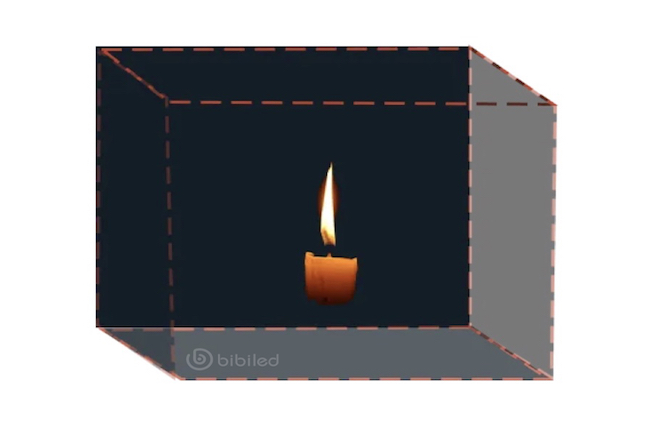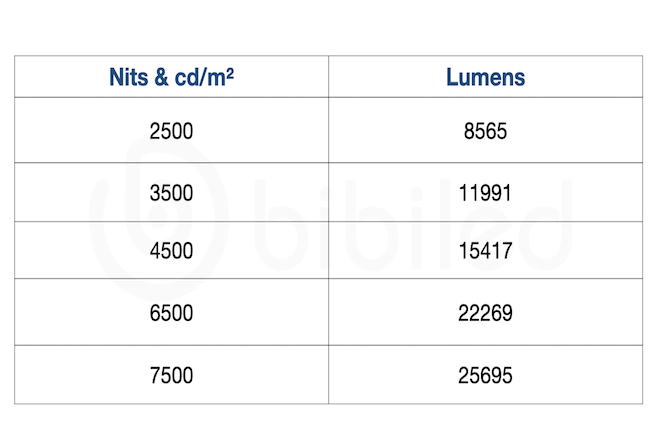What are nits in LED screens?
What is the difference between nits and lumens?
What is the Importance of luminance or brightness on LED Screens?
How do choose the appropriate brightness for an LED screen?
How to control the light or brightness of LED screens?

No matter which screen you’re using to read this article, every square meter of screen brightness may emit the equivalent of hundreds of candles.
That’s right – candlelight is the basic unit of light measurement; we will see 6000nits in the LED display datasheet; what does this mean? What’s the deal with candles? Does it have a big impact on the LED display? This article will tell you the answer you want:
1. What are nits in LED screens?
The word “Nit” comes from the Latin verb internet, which means “to shine” and is a unit of visible light intensity commonly used to describe the brightness of video displays.
One nit equals one candela per square meter (1 nit = 1 cd/m2), so how bright?
People often use the light from a candle or candlestick as a reference, imagine that you put a candle in a cube with a total surface area of one meter by one meter, the total amount of light emitted by the source of the candle is approximate ” 1 candela = 1 nit”.
You may have also seen units of brightness such as candela, lumens, lux, etc. Still, nit, because it measures the luminous intensity of a given area, it is more helpful in comparing the relative brightness of LED displays; even if their size is not the same, it is still the most commonly seen measurement.
2. What is the difference between nits and lumens?
Another common measure of light intensity is lumens, which refers to the measurement of reflected light at a certain distance from a reflective surface, a unit of brightness usually used for indoor projectors.
The easiest way to tell the difference between nits and lumens is to think of nits as sunlight (direct light), while lumens are more like a moonlight (reflected light).
1 nit is approximately equal to 3.426 lumens.
Whether you’re looking at the spec sheet of an LED display, a projector, or something else, read the values and units so as not to be deceived by high values.
The following is the more common lumen and nit value table:

3. The Importance of luminance or brightness on LED Screens?
If the brightness of the LED display is not enough, the viewer cannot see the displayed content, which greatly reduces the visual effect and the role of advertising.
LED displays to have higher brightness levels, and even when used in full light, the displayed content is still visible, so giant LED displays have always been one of the most sought-after in the outdoor advertising market.
4. How to Choose the Appropriate Brightness for an LED screen?
Recommended choice for outdoor LED display: Brightness higher than 5500nits.
The outdoor LED display can automatically adjust the brightness and ensure the high-quality effect of the displayed content for the variability of the outdoor weather environment.
Indoor LED display is recommended: between 1500 and 3000 nits; if it is facing the sun, the brightness is recommended to be 4500 nits.
The reason is:
The indoor environment is less affected.
The viewing comfort of strong brightness is not good.
Light pollution is avoided.
5. How to control the light brightness of LED screens?
There are many ways to control the brightness of the LED screen; each method has a specific function; the 2 common methods are as follows:
- LED display using programmable control
We create a pre-determined schedule that assigns custom brightness values based on the time period you want, which works great, but the system doesn’t consider weather changes to adjust brightness and always uses the default brightness value.
This system is a great option if you don’t want to use expensive and difficult-to-use external components such as light sensors.
- Control LED screen with brightness sensor
An LED screen brightness sensor is an external element added to an LED screen that adjusts its brightness level according to lighting conditions fully automatic. The photoreceptor is usually housed in a completely waterproof container, and there is no need to worry about the influence of the outside environment.
The automatic brightness sensor is more convenient, saving time and cost and having a high-quality picture.
In conclusion:
The above explains the nits of the LED display and the suggestion for choosing the brightness of the LED display.
To allow you to purchase and use your LED display more efficiently, you can consult the LED display professionals info@bibiled.com for more questions, or leave a message below to tell you the LED knowledge you most want to know and the feeling of reading the article.
